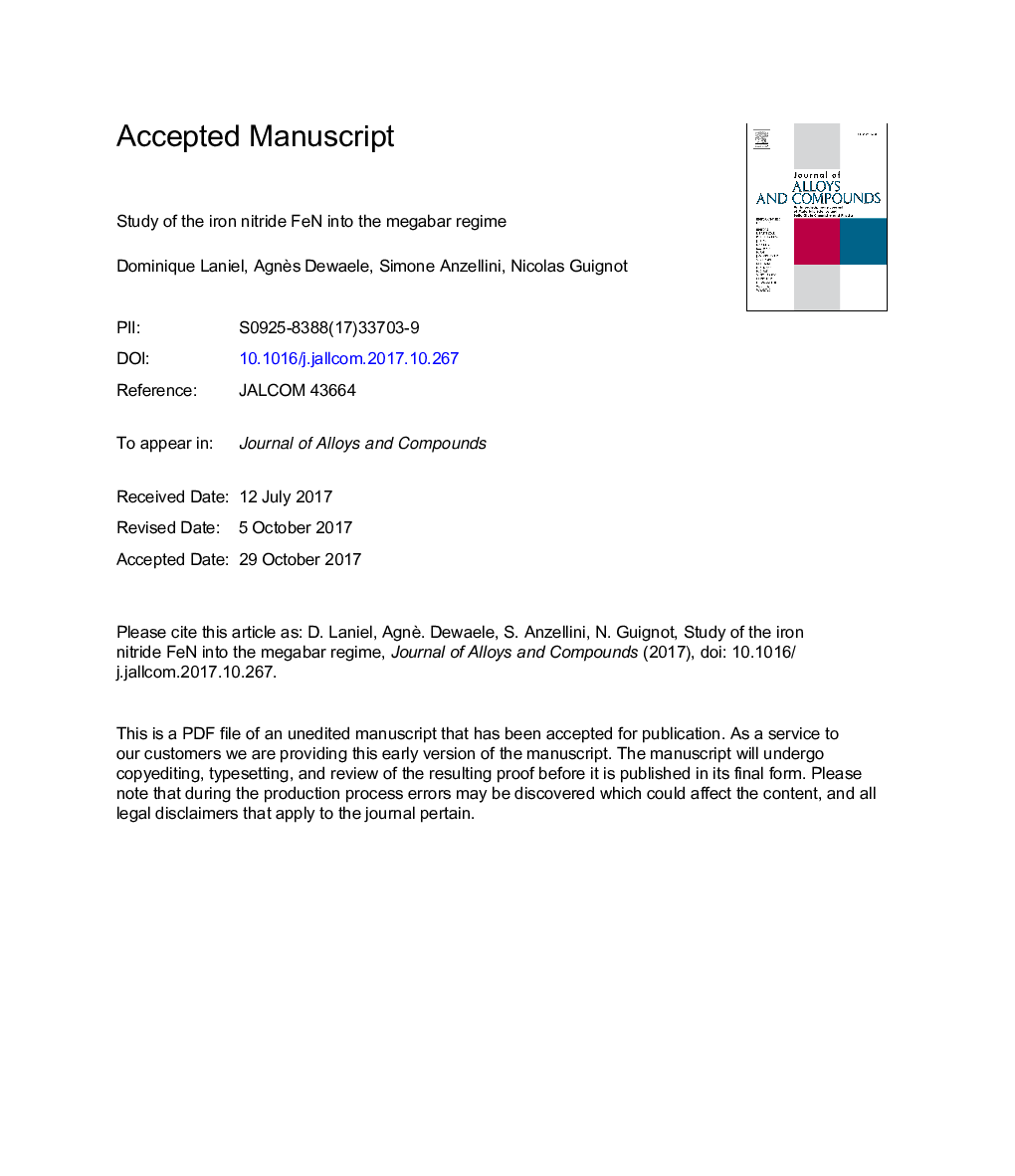| Article ID | Journal | Published Year | Pages | File Type |
|---|---|---|---|---|
| 7994875 | Journal of Alloys and Compounds | 2018 | 15 Pages |
Abstract
In this work, the nitrogen-rich portion of the Fe-N binary phase diagram is investigated up to 128 GPa. The samples, largely in excess of nitrogen, were laser-heated in diamond anvil cells to temperatures up to 2000 K at regular pressure intervals to help in crossing possible activation barriers towards the more stable phase. Three Fe-N compounds: ZnS-type FeN, Fe2N and NiAs-type FeN, are characterized by powder X-ray diffraction and their observed stability domain reported. Below 12.5 GPa, orthorhombic Fe2N is found to be the energetically-favored compound while NiAs-FeN becomes stable above 17.7 GPa. Energy-dispersive X-ray spectroscopy measurements and a Rietveld refinement confirmed the stoichiometry and structure of the recovered NiAs-FeN sample. A precise determination of its bulk modulus (K0 = 200(5) GPa) as well as its pressure derivative (K0â²Â = 5.3(2)) is obtained and, based on its unit cell axial ratio evolution, the NiAs-FeN compound appears to decrease in ionicity concomitantly with pressure. Within the pressure-temperature conditions reached here, the predicted iron pernitride FeN2 is not observed.
Keywords
Related Topics
Physical Sciences and Engineering
Materials Science
Metals and Alloys
Authors
Dominique Laniel, Agnès Dewaele, Simone Anzellini, Nicolas Guignot,
